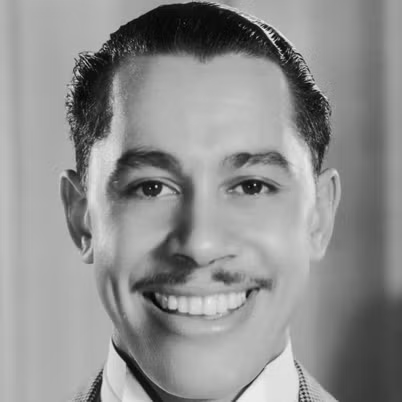
Table of Contents
Who Was Cab Calloway?
Cab Calloway, a renowned singer and bandleader, was instrumental in popularizing scat singing and achieved significant fame during the 1930s and 1940s. He gained widespread acclaim with his hit song “Minnie the Moocher” in 1931, which solidified his status as one of the era’s leading entertainers. Calloway’s dynamic performances on stage and in film captivated audiences until his passing in 1994 at the age of 86.
Early Life
Born Cabell Calloway III on December 25, 1907, in Rochester, New York, Calloway’s vibrant personality and artistic talent quickly distinguished him as a prominent figure in music. He grew up in Baltimore, Maryland, where he began singing and developed a passion for visiting racetracks. A subsequent move to Chicago, Illinois, led him to study law at Crane College (now Malcolm X College); however, his primary focus remained on music.
While performing at the Sunset Club in Chicago, Calloway encountered jazz legend Louis Armstrong, who mentored him in the art of scat singing—an improvisational vocal technique that utilizes nonsensical sounds. In 1928, Calloway took the helm of his own band, the Alabamians, and, eager to advance his career, relocated to New York City the following year.
Minnie the Moocher
In 1930, Cab Calloway secured a position at Harlem’s renowned Cotton Club, where he soon established himself as the bandleader of Cab Calloway and His Orchestra. He achieved widespread recognition with his hit “Minnie the Moocher” (1931), a chart-topping success that sold over one million copies. The song’s iconic call-and-response “hi-de-hi-de-ho” chorus, which Calloway improvised during a performance when he forgot the lyrics, became his signature phrase for the remainder of his career.
Songs and Film Appearances
Calloway’s impressive catalog included other notable hits such as “Moon Glow” (1934), “The Jumpin’ Jive” (1939), and “Blues in the Night” (1941). His prominence was further amplified through radio appearances and performances in films like The Big Broadcast (1932), The Singing Kid (1936), and Stormy Weather (1943). Beyond music, Calloway made significant cultural contributions with his 1944 publication, The New Cab Calloway’s Hepster’s Dictionary: Language of Jive, which defined terms such as “in the groove” and “zoot suit.”
Throughout the 1930s and 1940s, Calloway and his orchestra embarked on successful tours in Canada, Europe, and across the United States. To mitigate the challenges of segregation, they often traveled in private train cars, particularly during Southern tours. Calloway’s dynamic stage presence, characterized by his captivating voice and stylish white tuxedos, made him the star attraction. Additionally, he was known for offering competitive salaries to his musicians, second only to Duke Ellington’s, attracting outstanding talent such as saxophonist Chu Berry, trumpeter Dizzy Gillespie, and drummer Cozy Cole.
From Porgy and Bess to The Blues Brothers
By 1948, as the popularity of big bands waned, Calloway adapted by leading a six-member group. From 1952, he spent two years in the revival of the musical Porgy and Bess, portraying the character Sportin’ Life, a role reportedly inspired by Calloway himself in George Gershwin’s original conception. He continued to take on prominent stage roles, including the male lead in the 1967 production of Hello Dolly!, featuring an all-Black cast that included Pearl Bailey.
Calloway introduced himself to a new generation through appearances on Sesame Street and in Janet Jackson’s 1990 music video for “Alright.” He also chronicled his life in his autobiography, Of Minnie the Moocher and Me (1976), and made notable film appearances, most famously in the 1980 movie The Blues Brothers, where he donned his signature white tie and tails to perform “Minnie the Moocher” once again.
Personal Life
In the mid-1950s, Calloway married Zulme “Nuffie” Calloway, and they settled in Greenburgh, New York. The couple welcomed one daughter, Chris Calloway, who became a respected jazz singer and dancer, performing alongside her father. Chris passed away in August 2008 after a long battle with breast cancer, followed by Nuffie’s death in a Delaware nursing home at the age of 93.
Legacy and Death
In recognition of his contributions to the arts, President Bill Clinton awarded Calloway the National Medal of the Arts in 1993. Calloway spent his later years in White Plains, New York, until a stroke in June 1994 necessitated his move to a nursing home in Hockessin, Delaware. He passed away on November 18, 1994, at the age of 86, leaving behind a rich legacy in music and culture.
